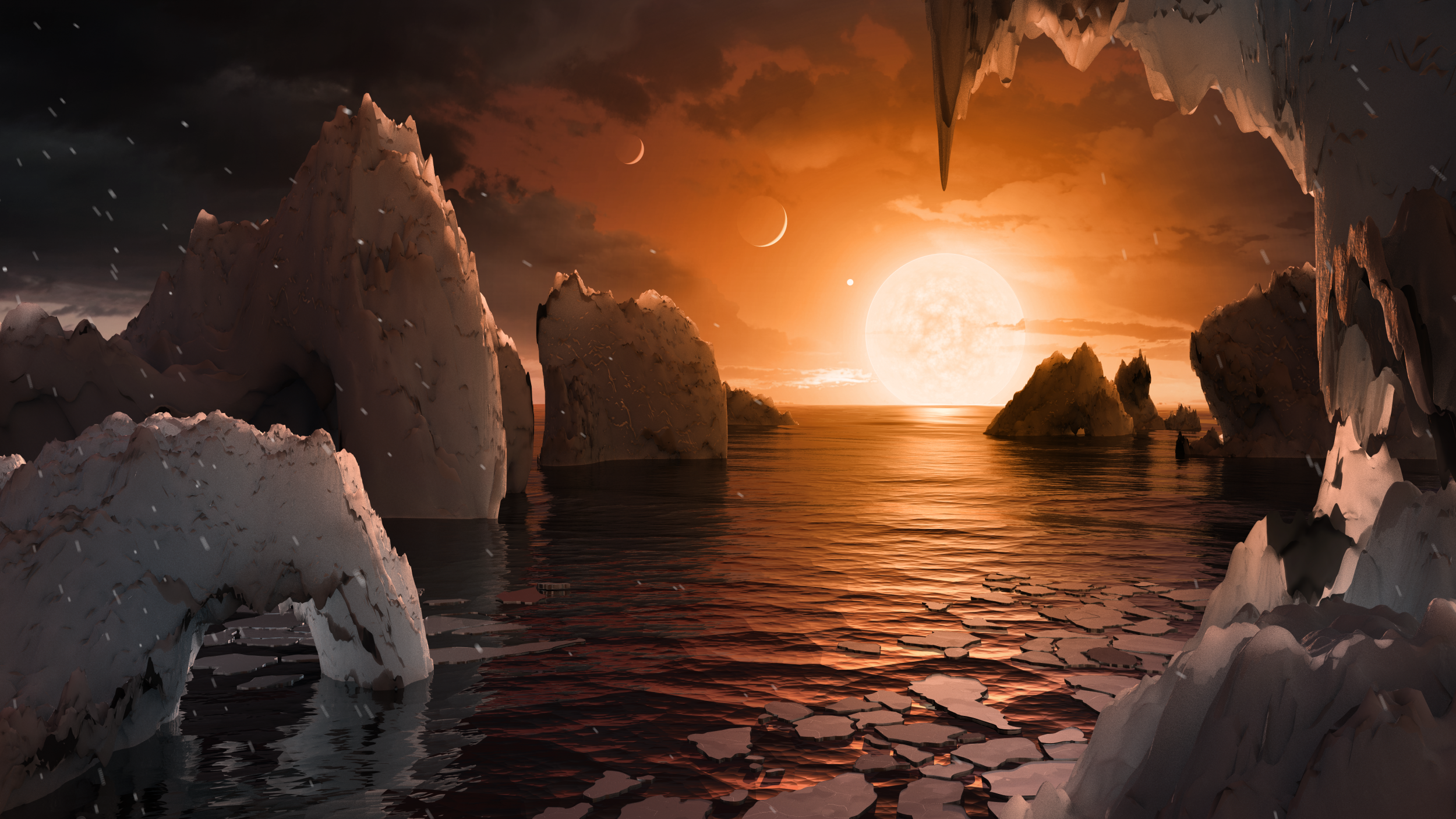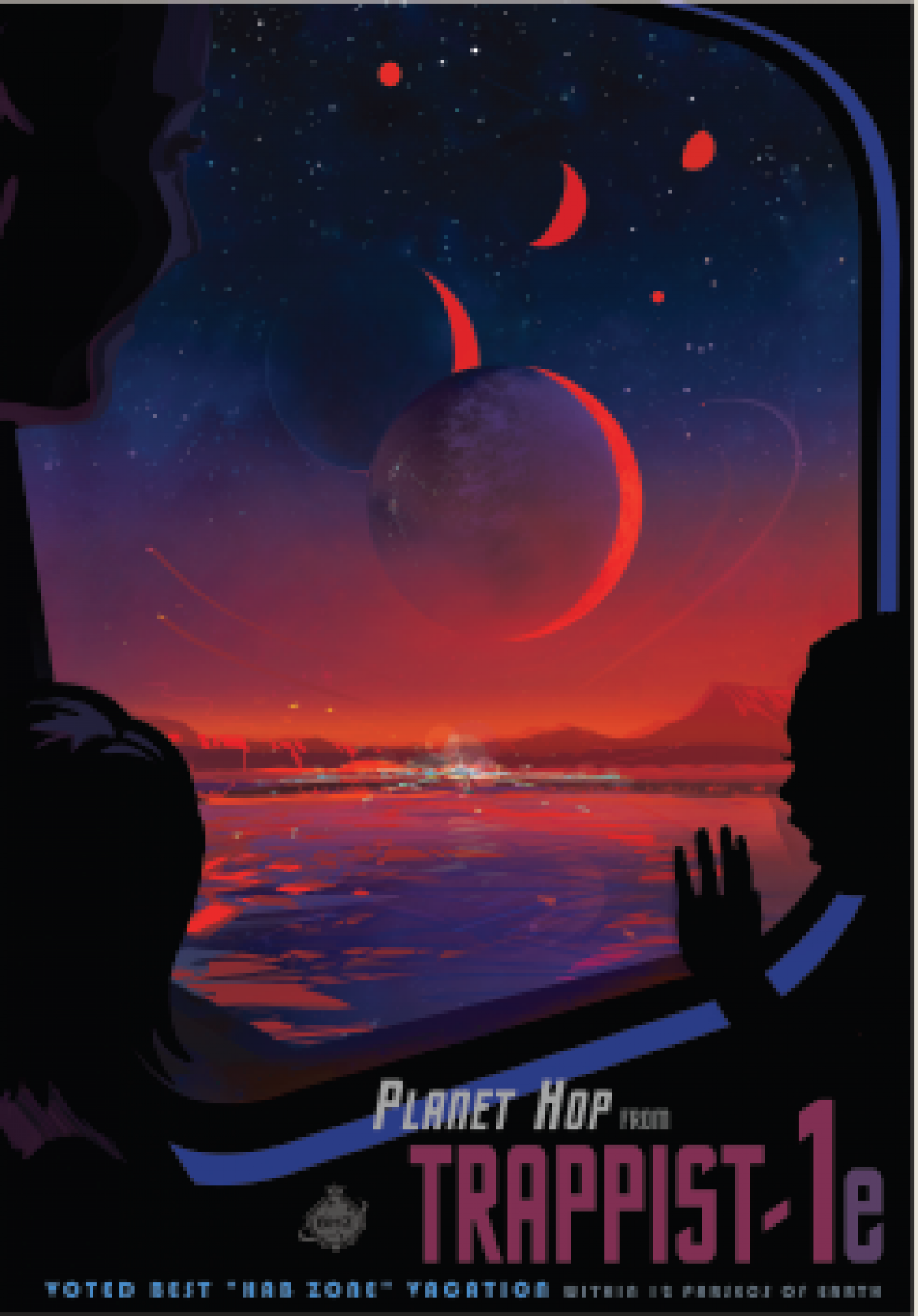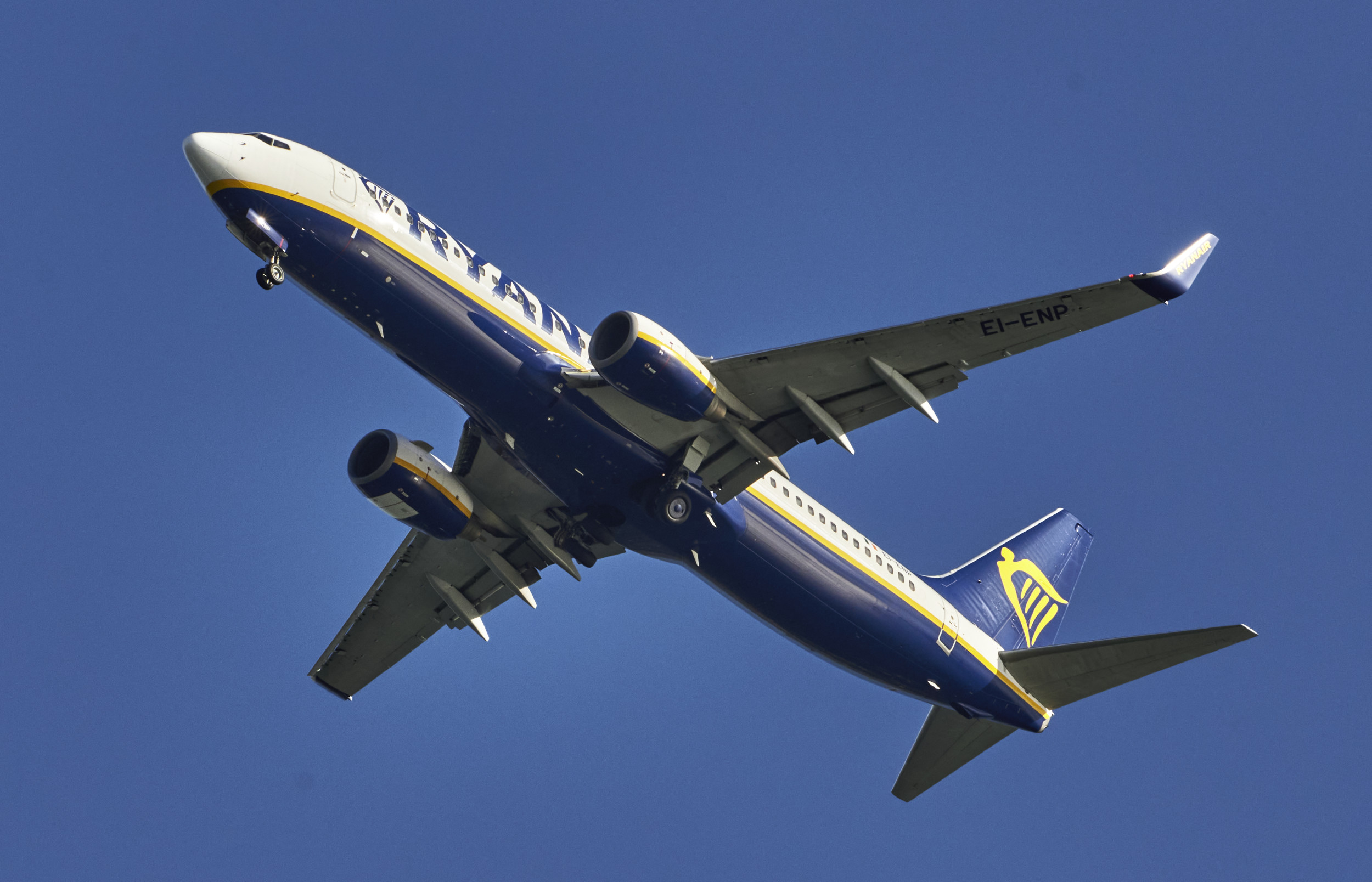
The prescience and continuing relevance of a recently unearthed essay by Winston Churchill titled "Are We Alone in the Universe?" didn't take long to prove. Scientists announced Wednesday that they've confirmed the existence of seven roughly Earth-sized planets orbiting the star TRAPPIST-1. Three of these exoplanets are situated in what's called the "habitable zone," where temperatures are neither too hot nor too cold to have liquid water and sustain life.
"This is the first time that so many Earth-sized planets have been found around the same star," Michael Gillon, an astronomer at the STAR Institute at the University of Liege in Belgium, said at a NASA briefing about the discovery. Gillon is the lead author of a paper titled "Seven Temperate Terrestrial Planets Around the Nearby Ultra-Cool Dwarf Star TRAPPIST-1," which will be published in the journal Nature.
The journal last week published a piece by astrophysicist Mario Livio comparing Churchill's essay to current thinking about the possibility of extraterrestrial life. Decades ago, Churchill described what we now call the habitable zone and asked whether there were planets orbiting stars other than the sun that could harbor life. Now scientists are studying the three exoplanets that lie in that zone around TRAPPIST-1 and will attempt to discover whether they could, did or do harbor life.
Exoplanet is the word used for any planet that revolves around a star other than the sun. This particular system was named after the Transiting Planets and Planetesimals Small Telescope, or TRAPPIST, in Chile, which was used to identify three planets around an ultra-cool dwarf star last May.
Since then, researchers have used NASA's Spitzer Space Telescope along with the European Southern Observatory's Very Large Telescope and other telescopes to confirm the existence of two of those three exoplanets and to identify five others. They have measured the precise size of each planet using the dip in the star's light as each planet passes it, Sean Carey, manager of NASA's Spitzer Science Center, explained at the briefing. By measuring the interval between transits, they could also calculate the period of the orbit as well as the distance from the star. Finally, they were able to estimate the masses of the six inner planets and subsequently estimate their densities. The researchers believe it's likely that all of the planets in the system are rocky.

As an ultra-cool dwarf star, TRAPPIST-1 is much smaller and cooler than the sun, with only about 8 percent of its mass and a very dim appearance. If the sun were a basketball, Gillon said at the briefing, TRAPPIST-1 would be a golf ball. It's in the constellation Aquarius and, at 40 light-years away, is relatively close to Earth. Still, even traveling at light speed, it would take about 39 years to get there, said Nikole Lewis, an astronomer at the Space Telescope Science Institute in Baltimore. In a jet plane, she added, it would take about 44 million years.
The exoplanets that are part of the TRAPPIST-1 system—dubbed TRAPPIST-1b, c, d, e, f, g and h—are relatively close to the star and to each other. According to depictions in illustrations and a new "travel poster" released by NASA, "If you were on the surface of one of these planets, you'd have a wonderful view of the other planets," Gillon said.
They also have relatively short orbits; the innermost planet's is about 1.5 days, and the outermost planet's, though it hasn't been measured exactly, would be about 20 days, he said. Exoplanets 1e, f and g fall within the star's habitable zone, also called "the Goldilocks Zone," where NASA says "a rocky planet is most likely to have water."
Lewis described each of the three planets in the habitable zone using animations. TRAPPIST-1e is very close in size to Earth, receives about the same amount of light as Earth and could have very similar temperatures; TRAPPIST-1f is a potentially water-rich world that is also about the same size as Earth, has a nine-day orbit and receives about the same amount of light as Mars; and TRAPPIST-1g is the largest planet in the system, with a radius about 13 percent larger than that of Earth, and it receives about the same amount of light as somewhere between Mars and the asteroid belt.
It's important to note that water has not yet been discovered, Lewis emphasized, and it will take many more observations before that could happen. But, she said, "we are certainly looking." Future studies of these exoplanets' atmospheres, using techniques like transmission spectroscopy, will help assess whether they are puffy and hydrogen-dominated or if they are rocky planets that could have water. "The TRAPPIST-1 system provides one of the best opportunities in the next decade to study the atmospheres around Earth-size planets," Lewis is quoted as saying in NASA's press release.
NASA's Hubble Space Telescope and the Kepler space telescope are also already observing the TRAPPIST-1 system, as will the James Webb Space Telescope after its scheduled launch in 2018. The Spitzer Science Center telescope is continuing to take observations, Carey said, and the researchers will soon have more accurate measurements of the masses of the TRAPPIST-1 exoplanets.
Scientists have found thousands of exoplanets since the first one was confirmed in 1995, though only dozens have been found to be in habitable zones. Still, "unlike a lot of the other habitable zone planets" that scientists have previously discovered, "we can actually assess [the TRAPPIST-1 exoplanets] in the near future" with tools like the Webb telescope, said Sara Seager, a professor of planetary science and physics at the Massachusetts Institute of Technology. "That's why the TRAPPIST planets are so relevant," she noted at the Wednesday briefing. "We don't have to rely on speculation."
Thomas Zurbuchen, associate administrator of the Science Mission Directorate at NASA Headquarters in Washington, talked about the timing of the discovery announced Wednesday. "It's exciting because it's a leap forward," he said, but it's also "exciting because it goes in parallel to other leaps we're taking right now."
Those include missions looking at the complex chemistry on Mars, the existence of technology that can take us out to study Jupiter's moon Europa, and theoretical advances in our understanding of the biology of life. There has been "a tremendous amount of progress," Zurbuchen said. "Together, these really create a crescendo towards answering that question that has been on our minds for so long."
Uncommon Knowledge
Newsweek is committed to challenging conventional wisdom and finding connections in the search for common ground.
Newsweek is committed to challenging conventional wisdom and finding connections in the search for common ground.
About the writer
Stav is a general assignment staff writer for Newsweek. She received the Newswomen's Club of New York's 2016 Martha Coman Front ... Read more
To read how Newsweek uses AI as a newsroom tool, Click here.








